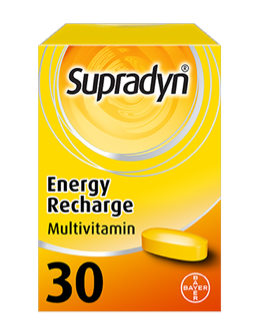FOR HEALTHCARE PROFESSIONALS
Prevalence of micronutrient deficiencies among children
Among other factors, micronutrient deficiency causes malnutrition in 178 million children worldwide.26,27
Contrary to popular belief, malnutrition is common not only in developing countries but across developed nations as well. While the primary cause of malnutrition in third-world countries is food shortages, children in the United States and Europe are malnourished due to unhealthy eating habits. Excess consumption of sugary foods and lack of fruit and vegetables in children’s diets inevitably lead to micronutrient deficiency. As a result, the daily intake of fundamental vitamins and minerals like iron, calcium, vitamin D, zinc, and more, is inadequate across the Western World. Already a marginal deficiency of vitamin C and B-vitamins results in decreased physical performance, while a prolonged micronutrient deficiency can substantially hinder children’s physical, cognitive, and immunological development. Given that a suboptimal micronutrient status takes a toll on children’s healthy development, supplementation with vitamins for kids is recommended to support their growth and restore the micronutrient balance. Supradyn Kids can provide nutrients during periods of increased physical and mental effort, illness, and when dietary intake is not optimal.
Micronutient deficiencies occur across the globe
Country |
Description |
|---|---|
Italy |
|
Russia |
|
Europe |
|
Turkey |
|
Spain |
|
Country |
Description |
|---|---|
Mexico |
|
USA |
Intake below Estimated Average Requirement:25
|
Brazil |
|
REFERENCES
- NestiMM, GoldbaumM. Infectious diseases and daycareand preschool education. J Pediatr(Rio J) 2007;83:299–312;
- Infections in child care centres. PaediatrChild Health 2000;5:495–6;
- Ferguson A, Penney R, Solo-Gabriele H. A Review of the Field on Children’s Exposure to Environmental Contaminants:A Risk Assessment Approach. IntJ Environ Res Public Health 2017;14:E265;
- Simon AK, Hollander GA, McMichael A. Ev olution of the immune system in humans from infancy to old age. ProcRSocB2015;282:20143085;
- MikolajczykRT, et al. Social contacts of school children and the transmission of respiratory-spread pathogens. EpidemiolInfect 2008;136:813–22;
- EamesKTD, et al. Measured dynamic social contact patterns explain the spread of H1N1v influenza.PLoSComputBiol2002;8:e1002425;
- MagginiSB, et al. Feeding the immune system: The role of micronutrients in restoring resistance to infections. CAB Review: Perspectives in Agriculture, Veterinary Science, Nutrition and Natural Resources 2008;3:98;
- Huskisson E, MagginiS, RufM. The influence of micronutrients on cognitiv e function and performance. J IntMed Res2007;35:1–19;
- Huskisson E, MagginiS, RufM. The role of v itamins and minerals in energy metabolism and well-being. J IntMed Res2007;35:277–89;
- DriskellJA. Vitamins and trace elements in sports nutrition. WolinskyI, DriskellJA (eds): Sports Nutrition: Vitamins and Trace Elements. 49–83. CRC Press, 1999;
- SoriceA, et al. Ascorbic acid: its role in immune system and chronic inflammation diseases. Mini Rev Med Chem2014;14:444–52;
- Kim Y, et al. Vitamin C is an essential factor on the anti-viral immune responses through the production ofinterferon-alpha/beta at the initial stage of influenza A v irus (H3N2) infection. Immune Net w2013;13:70–4;
- Barbosa E, et al. Supplementation of v itamin E, vitamin C, and zinc attenuates oxidative stress in burned children: a randomised, double-blind, placebo-controlled pilot study. J Burn Care Res2009;30:859–66;
- GaraiovaI, et al. Probiotics and vitamin C for the prev ention of respiratory tract infections in children attending preschool: a randomised controlled pilot study. EurJ ClinNutr2015;69:373–9;
- PrietlB, et al. Vitamin D and immune function. Nut rients2013;5:2502–21;
- LoomanKIM, et al. The role of v itamin D on circulating memory T cells in children: The Generation R study. PediatrAllergy Immunol2017;28:579–87;
- Bergman P, et al. Vitamin D and Respiratory Tract Infections: A Systematic Review and Meta-Analysis of Randomized Controlled Trials. PLoSOne 2013;8:e65835;
- Camargo CA Jr, et al. Randomized trial of v itamin D supplementation and risk of acute respiratory infection in Mongolia. Pediatrics2012;130:e561–7;
- GombartAF, BorregaardN, KoefflerHP. Human cathelicidinantimicrobial peptide (CAMP) gene is a direct target of the vitamin D receptor and is strongly up-regulated in myeloid cells by1,25-dihydroxyvitamin D3.FasebJ2005; 19:1067–77;
- PrietlB, et al. Vitamin D and immune function. Nut rients2013;5:2502–21;
- Wang TT, et al. Cutting edge: 1,25-dihydroxyvitamin D3 is a direct inducer of antimicrobial peptide gene expression. J Immunol2004;173:2909–12; 20.
- TomiyamaK and Arakawa Y. [Zinc-and tin-induced apoptotic mechanisms in immune system and cranial nerve system. Nihon Rinsho2016;74:1111–9;
- Prasad AS. Discov ery of human zinc deficiency: its impact on human health and disease. AdvNutr2013;4:176–90;
- Singh M and Das RR. Zinc for the common cold. Cochrane Database SystRev2013:CD001364;
- Kumar V and ChoudryVP. Iron Deficiency and Infection. Indian J Pediatr2010;77:789–93;






